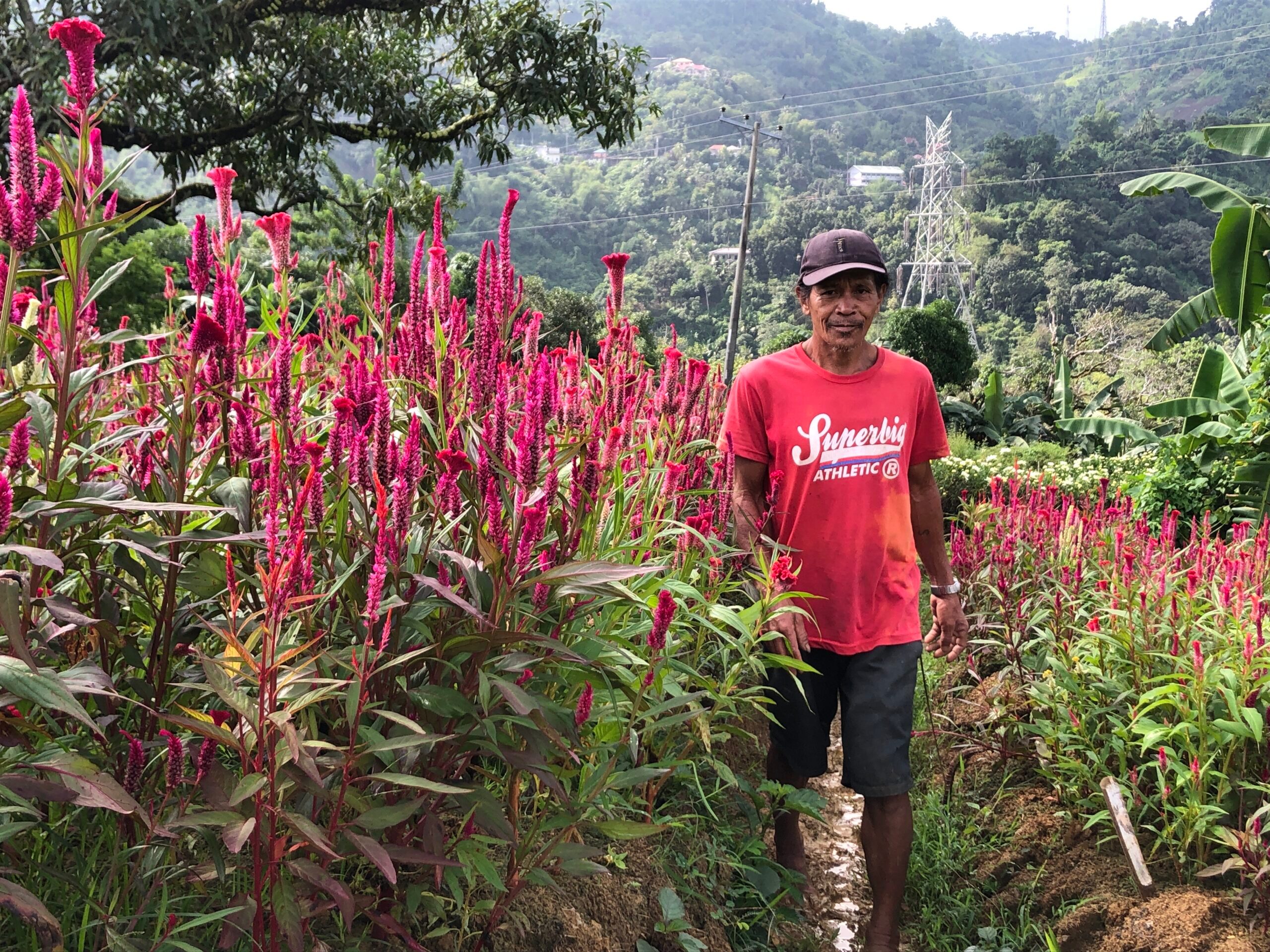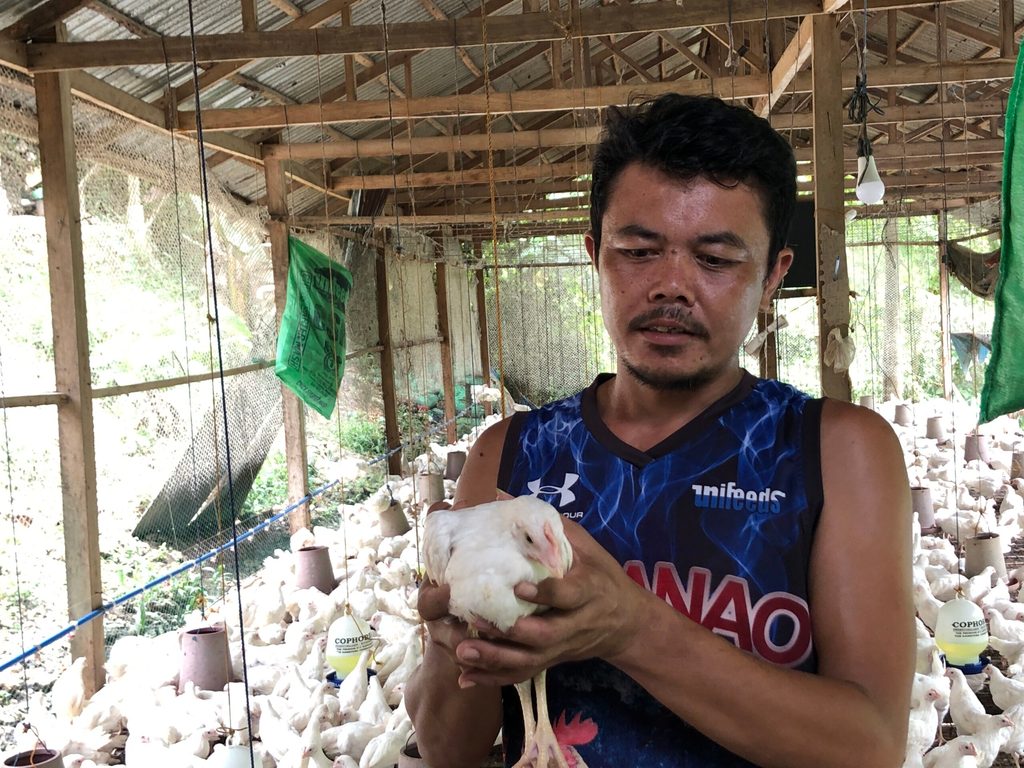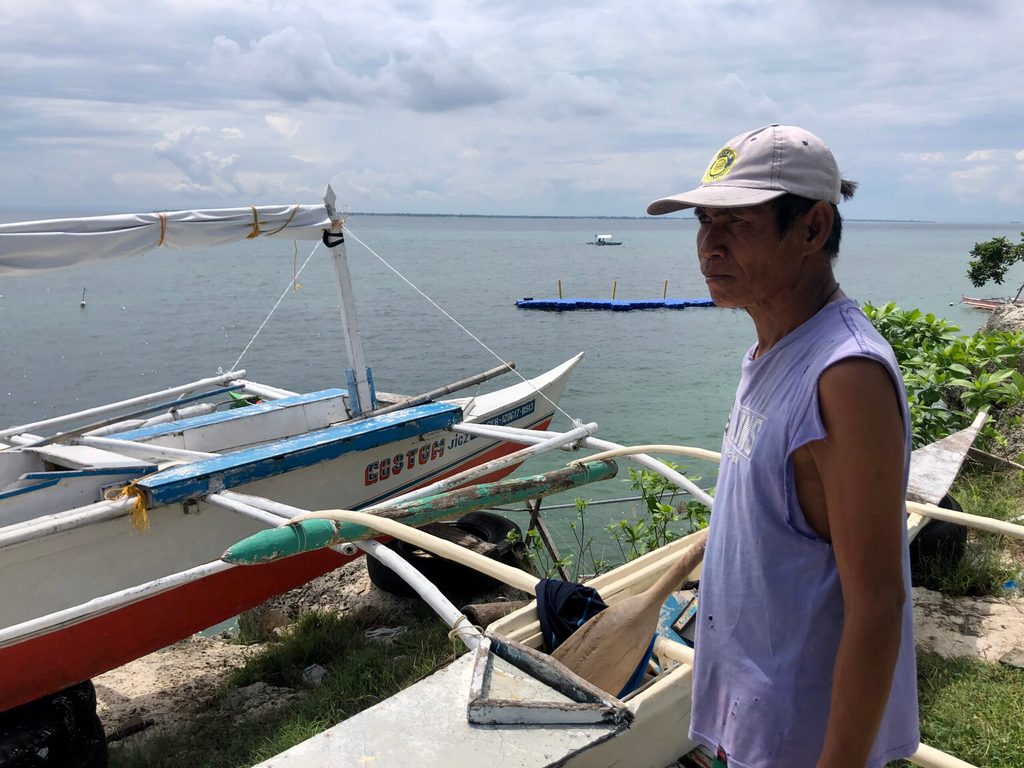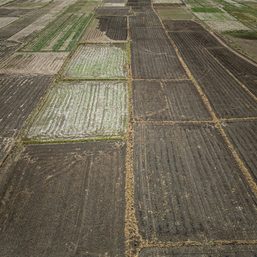SUMMARY
This is AI generated summarization, which may have errors. For context, always refer to the full article.

CEBU, Philippines – For more than four decades, Jovito Solon’s daily routine started with waking up before the crack of dawn, sipping hot coffee, before grinding through the day tilling, digging, and cultivating his plants.
When he goes out to work on his farm, he brings only a cap to cover his head, a towel to wipe his sweat, and his trusty hoe. He walks miles barefoot because wearing slippers only slows him down and would, ironically, cause him to slip on the wet, grassy soil.
There’s almost no shade in his farm that’s located in the mountain barangay of Malubog in the outskirts of Cebu City, where the scorching heat of sun can be dangerous to the health of farmers and their livestock.
Still, at 55 years old, Solon works tirelessly every day to make ends meet, despite the fact that he has no family to take care of and relies only on himself.
This November, the farmer told Rappler that he hoped to see his hard work bear fruit, especially when he sells his flowers, a batch of 300 plumed cockscombs, for an estimated sum of P30,000 to buyers on All Souls Day.
Solon said that working the land has become more difficult because of the intense heat brought by the El Niño phenomenon. In the past few months, the farmer saw 5 out of 6 rows of his plumed cockscombs dried out.
“Halos tanan nahurot. Samot na katong nagbagyo (Almost all of them were gone. It was worse when the storm came),” Solon said.
In the first week of October, a large portion of the Visayas experienced strong winds and rainfall due to Typhoon Jenny (Koinu). On October 6, the typhoon eventually weakened, gradually leaving the Philippine Area of Responsibility (PAR).
Solon had already spent more than P3,100 for a week’s worth of fertilizer and growth boosters in August. He shelled out P3,500 as initial capital for his entire farming set-up.
According to the farmer, the flowers are only ready for harvest after 2 months. If the plants die due to bad weather, Solon said he can still offer to till land for other farm owners for P30 a row but other than that, there’s not much jobs he can do around the village.
“Usahay walay kaon… og wala gyud ko makuha kay mangutang gyud (Sometimes, I don’t eat… if I don’t get anything I’ll have to get a loan),” the farmer said.
Increasing costs of livelihood
While many farmers like Solon already have to deal with the increasing cost of farming materials, other members of the agricultural sector also face higher costs from their livelihoods.
In the northern part of Cebu, Danao-based poultry breeder Reno Ysolan, 40, told Rappler on Wednesday, October 11, that milling companies have started to increase the price of feed.
Ysolan explained that because of the intense heat, the water reservoirs of some mills have dried up, forcing them to purchase water from external sources.
“Ila man gyud na i-add-on sa ilahang gasto. Di mana sila pa-alkanse mga feed mill (They really add that to their costs. They don’t want any loss in profit),” Ysolan said.
This phenomenon, the breeder said, has pushed the price of a 50-kilogram bag of grower feed to P1,800—the suggested retail price of a 50-kilogram bag of grower feed is P1,710.

Meanwhile, fishermen like Carmilo Daiton, 68, from Lapu-Lapu City, have to worry about spending more for gasoline when catching fish.
Daiton told Rappler on Friday, October 13, that the El Niño season caused a majority of the fish along the Hilutungan Channel, between the islands of Mactan and Olango, to migrate to deeper parts of the sea where it’s colder compared to their old fishing grounds.
He and his fellow fishermen must travel from their home in Barangay Punta Engaño to farther waters which may either be near the Camotes Islands or the province of Bohol. Each trip would require them to pool in P500 for 8 liters of gasoline. That amount used to be the cost of 12 liters in 2020, Daiton said.
The fishermen shared that they would often feel discouraged from continuing fishing when they hear news of an upcoming storm. For Daiton, this meant fewer fish and more boats possibly destroyed.
“Ang dagat abunda kaayo sauna pero karon nihit na kaayo (The sea used to be so abundant before but now it’s almost empty),” Daiton said.
The fisherman said that if he was lucky, he would earn at least P150 to P200 from a day’s worth of fishing.

Agricultural assistance
At present, the Department of Agriculture and its local government counterparts provide farmers with agricultural supplies like seeds, fertilizers, insurance, and even financial assistance to those who are registered members of agri-related associations.
Alex Baring, the head of Lapu-Lapu City Agriculture and Fishery Office (CAFO), told Rappler on Friday, that they’ve begun introducing seaweed farming to struggling fisherfolk communities with the help of the Bureau of Fisheries and Aquatic Resources.
In February, the city government collaborated with Japanese financial firm Impact Circle Incorporated for a special loan program aimed at providing 100 motorboats to fisherfolks in Olango island.
However, Tessie Jagmoc, the executive director of the Central Visayas Farmers Development Center, Inc. (FARDEC), told Rappler on Tuesday, that there have been deficiencies when it comes to the distribution of assistance.
Jagmoc explained that in visits to farming communities in Cebu and Bohol, they noticed that only those registered with the barangays receive government aid.
“The problem is that in ensuring the aid reaches the farmers, barangays are given only limited time to list and reach out beneficiaries, leaving out those who might be far from the rest,” Jagmoc said.
The development worker added that it was hard for barangay personnel to traverse mountainous and island barangays in search of eligible aid beneficiaries, especially under severe weather conditions.
Solon, for his case, has yet to receive any agricultural assistance from the government for the year. The farmer recalled only writing his name on a list provided by village officials and being promised some assistance.
The last time he received any aid was after Typhoon Odette hit the province of Cebu in December 2021. – Rappler.com
Add a comment
How does this make you feel?























There are no comments yet. Add your comment to start the conversation.